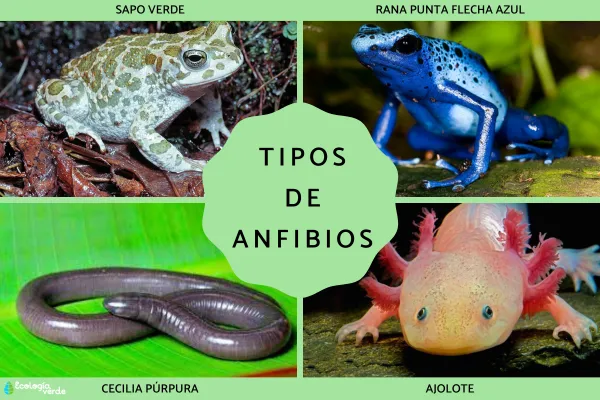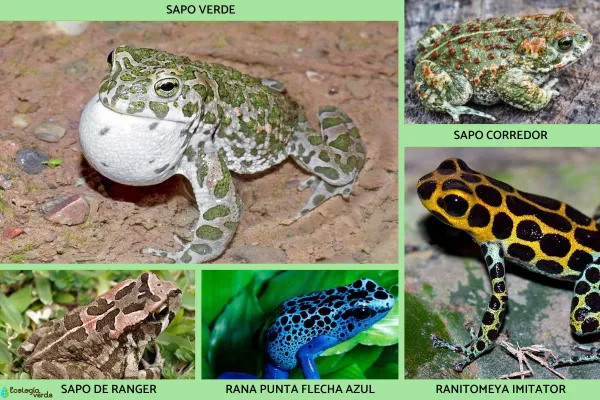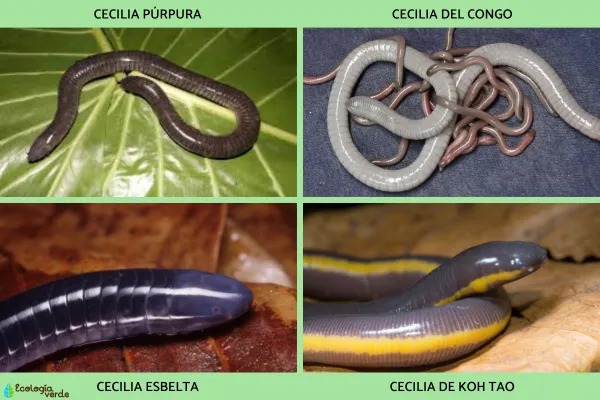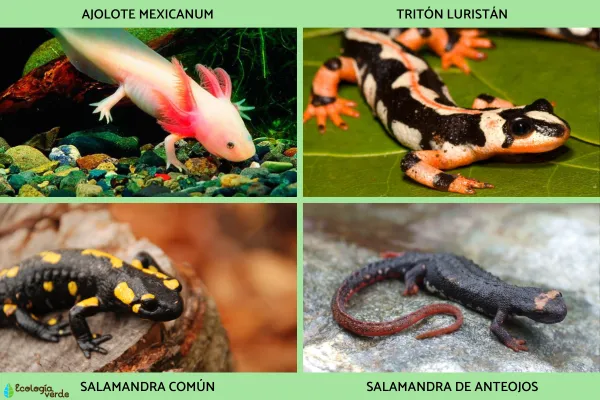When people hear the word "amphibian," they often think of frogs—but the amphibian world is much more diverse than that. Amphibians are vertebrate animals that typically live both in water and on land during different life stages. Scientifically, amphibians are divided into three main groups: Anura (frogs and toads), Caudata (salamanders and newts), and Gymnophiona (caecilians).
In this article, we’ll explore the definition of amphibians, their unique biological traits, classification, and some fascinating examples of each group.

Amphibians are cold-blooded vertebrates (class Amphibia) that depend on freshwater environments for survival or reproduction. Here are their main features:
Moist, permeable skin: Amphibians lack scales and rely on their skin to absorb water and oxygen, making them highly dependent on moist habitats.
Ectothermic (cold-blooded): They cannot regulate their internal temperature and rely on external heat sources.
Solitary behavior: Most amphibians live alone and only gather in groups during breeding seasons.
Aquatic larvae and metamorphosis: Eggs are typically laid in water, hatching into aquatic larvae (tadpoles), which later metamorphose into terrestrial or semi-aquatic adults.
Diet shifts during growth: Larvae usually feed on algae and organic matter, while adults are carnivorous, feeding on insects and other small animals.
Respiration through skin: Many amphibians can breathe through their skin in addition to their lungs, and some lack lungs altogether.
Amphibians belong to the phylum Chordata and the class Amphibia. All living species fall under Lissamphibia and are classified into three main orders:
Anura – Frogs and toads
Gymnophiona – Caecilians
Caudata – Salamanders and newts
Let’s explore each group in detail.
Anurans are the most familiar and diverse group of amphibians, including thousands of frog and toad species.
Key Characteristics:
Adults are tailless; tails disappear during metamorphosis.
Powerful hind legs adapted for jumping.
Large, forward-facing eyes and wide mouths.
Insectivorous diets; some large species eat small mammals or birds.
Males produce species-specific calls to attract females.
Notable Families and Examples:
Traits: Rough, warty skin; shorter legs; generally larger and more terrestrial.
Examples:
Green Toad (Bufo viridis)
Natterjack Toad (Bufo calamita)
Ranger’s Toad (Amietophrynus rangeri)
Traits: Brightly colored and toxic; native to Central and South America.
Examples:
Blue Poison Dart Frog (Dendrobates tinctorius)
Mimic Poison Frog (Ranitomeya imitator)

Caecilians are the least known amphibians. They are limbless and resemble worms or snakes.
Key Characteristics:
Long, cylindrical, limbless bodies with ring-like grooves.
Small, often hidden eyes and reduced vision.
Live in soil or leaf litter; excellent burrowers.
Use chemical sensors (tentacles) to explore surroundings.
Some lay eggs, while others give birth to live young.
Notable Families and Examples:
Habitat: Tropical underground environments.
Examples:
Costa Rican Caecilian (Gymnopis multiplicata)
Congo Caecilian (Herpele squalostoma)
Slender Caecilian (Dermophis parviceps)
Distribution: Found in South and Southeast Asia.
Traits: Maternal care of eggs is common.
Example:
Koh Tao Caecilian (Ichthyophis kohtaoensis)

Caudates include species with tails, such as salamanders and newts. They show great diversity in size, color, and habitat.
Key Characteristics:
Adults retain their tails.
Slender bodies with four limbs of roughly equal size.
Many breathe through skin and mouth lining.
Size varies from a few centimeters to over a meter.
Internal fertilization via spermatophores.
Notable Families and Examples:
Example: Axolotl (Ambystoma mexicanum)
Exhibits neoteny (retains juvenile features into adulthood).
Fully aquatic and critically endangered.
Found in Europe, Asia, North Africa, and North America.
Traits: Often brightly colored with toxic skin secretions.
Examples:
Kaiser’s Spotted Newt (Neurergus kaiseri)
Fire Salamander (Salamandra salamandra)
Spectacled Salamander (Salamandrina terdigitata)

Amphibians exhibit a fascinating range of life strategies, body forms, and ecological adaptations. From the leaping agility of frogs to the secretive life of caecilians and the graceful movements of newts, amphibians are a vital part of many ecosystems and offer insights into the evolutionary transition from water to land.
To explore more about the world of wild animals, visit our “Animal Encyclopedia” and uncover the hidden wonders of nature.
Bibliography
Beatty, R., Beer, A., & Deeming, C. (2010). The Book of Nature. Great Britain: Dorling Kindersley.
animal tags: Amphibians
We created this article in conjunction with AI technology, then made sure it was fact-checked and edited by a Animals Top editor.